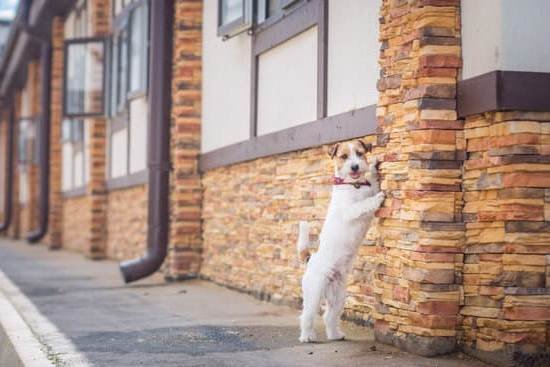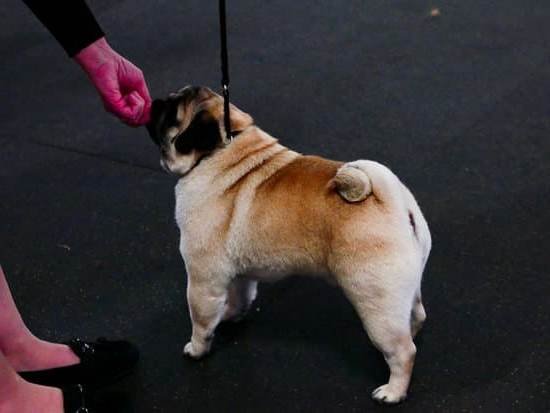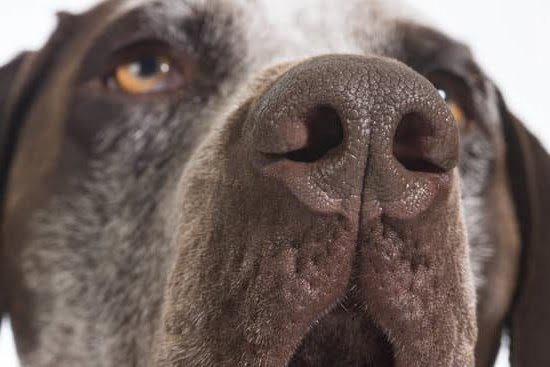How to teach potty trained dog to use indoor pad: For dog owners, indoor potty training can become a necessity due to various reasons. From extreme weather conditions to living in an apartment, there are numerous factors that may make it challenging for your potty trained dog to go outside every time they need to relieve themselves.
In this article, we will discuss the importance of understanding the need for indoor potty training and provide a comprehensive guide on how to successfully train your potty trained dog to use an indoor pad.
Indoor potty training is not just a convenience for dog owners; it can also be crucial for the well-being of your furry friend. From selecting the right type of indoor potty pad for your dog’s needs to using positive reinforcement techniques, we will explore every step of the process. Furthermore, we will highlight the significance of consistency in training and setting a potty schedule, as well as how to handle accidents and setbacks during the training process.
In addition, this article will cover the gradual transition from using an indoor pad to going outside for relief and offer troubleshooting tips for common issues that may arise during the training process. Whether you are considering indoor potty training or are already in the midst of training your dog, this guide aims to equip you with the knowledge and tools necessary for successful indoor potty training.
Selecting the Right Indoor Potty Pad for Your Dog
When it comes to selecting the right indoor potty pad for your dog, there are a few key factors to consider in order to ensure successful potty training.
Size and Absorbency
One of the most important considerations when choosing an indoor potty pad is the size and absorbency. The pad should be large enough to accommodate your dog’s size and it should have high absorbency to prevent leaks and messes. Look for pads specifically designed for dogs, as they are often more absorbent than regular household pads.
Material
Indoor potty pads come in a variety of materials, including disposable and reusable options. Consider your preferences and lifestyle when choosing the material. Disposable pads are convenient for quick clean-up, while reusable pads may be more cost-effective in the long run.
Odor Control
Another important feature to look for in an indoor potty pad is odor control. Some pads are designed with built-in odor neutralizers or attractants to encourage your dog to use them. This can be especially helpful during the initial training phase.
Ultimately, the right indoor potty pad for your dog will depend on your specific needs and those of your pet. Take the time to research different options and consider factors such as size, absorbency, material, and odor control to find the best fit for you and your furry friend.
Introducing the Indoor Potty Pad to Your Potty Trained Dog
Introducing your potty trained dog to using an indoor potty pad can be a smooth process if done properly. Whether you live in a high-rise apartment, have a busy schedule, or have a senior dog that may find it difficult to hold their bladder for long periods, indoor potty training can be a convenient solution.
Creating Familiarity
To introduce your potty trained dog to the indoor potty pad, start by placing the pad in an area where your dog is accustomed to going potty. This could be near the door they usually use to go outside or in their designated outdoor potty area. This will create a sense of familiarity for your dog and make them more comfortable with the new pad.
Monitoring and Encouragement
Monitor your dog closely during the transitioning period and encourage them when they use the indoor pad. You can use verbal praise, treats, or their favorite toy as positive reinforcement when they successfully use the indoor potty pad. It’s important to make this process as positive and rewarding as possible to help your dog associate the indoor pad with a good behavior.
Transitioning Steps
As your dog becomes more familiar with using the indoor potty pad, gradually move it closer to the desired location indoors. This will help in transitioning from outdoor to indoor potty areas. Be patient during this process and continue using positive reinforcement to encourage your dog’s good behavior.
Positive Reinforcement Techniques for Using the Indoor Pad
When teaching a potty trained dog to use an indoor pad, positive reinforcement techniques are essential for successful training. One effective technique is to reward your dog with treats or praise when they successfully use the indoor potty pad. This positive association will encourage your dog to continue using the pad instead of eliminating in inappropriate areas.
Another important technique is to use verbal cues or commands when introducing the indoor potty pad to your dog. For example, you can use a specific word or phrase such as “go potty” when directing your dog to the indoor pad. Over time, your dog will associate this command with using the pad and will be more likely to do so on cue.
Consistency is key when implementing positive reinforcement techniques. Make sure to consistently reward and praise your dog every time they use the indoor pad. This will help reinforce the desired behavior and improve the chances of successful indoor potty training.
| Positive Reinforcement Techniques | Benefits |
|---|---|
| Reward with treats or praise | Encourages dog to use indoor pad |
| Use verbal cues or commands | Associates specific command with using the pad |
| Consistently reward and praise | Reinforces desired behavior and improves training success |
Consistency in Training and Setting a Potty Schedule
When it comes to potty training your dog to use an indoor pad, consistency is key. Dogs thrive on routines and schedules, so establishing a regular potty schedule will help them understand when and where they should go. Here are some tips for maintaining consistency in training and setting a potty schedule:
- Set specific times for potty breaks: Just like humans, dogs have their own biological clocks. Establishing set times for potty breaks, such as first thing in the morning, after meals, and before bedtime, will help your dog understand when they should use the indoor pad.
- Use verbal cues: Consistently using a specific phrase or cue when it’s time for your dog to use the indoor pad can help reinforce the behavior. For example, saying “go potty” or “use the pad” every time you take your dog to the designated spot can create an association between the cue and the desired action.
- Monitor water and food intake: By regulating your dog’s access to food and water, you can better predict when they’ll need to go potty. This can help you anticipate when to take them to the indoor pad for a bathroom break.
By maintaining a consistent schedule and approach to indoor potty training, you can effectively communicate expectations to your dog and facilitate successful training.
Remember that patience is key during this process. Some dogs may take longer than others to adjust to an indoor pad, so it’s important not to get frustrated if there are setbacks along the way. With time, positive reinforcement, and consistency in training, most dogs can learn to use an indoor pad effectively.
Dealing With Accidents and Setbacks During the Training Process
Accidents and setbacks are a natural part of the indoor potty training process for dogs. It is important for dog owners to understand that occasional accidents are to be expected, especially during the early stages of training. It is crucial to remain patient and consistent in order to effectively train your potty trained dog to use an indoor pad.
When accidents occur, it is essential to avoid punishment or scolding. Instead, focus on reinforcing positive behavior by offering treats and praise when your dog successfully uses the indoor potty pad. This will help your dog associate using the pad with positive outcomes and encourage them to continue doing so in the future.
In addition, thoroughly clean any accident spots with an enzymatic cleaner to remove any lingering scent that may attract your dog back to that spot. This will help prevent repeat accidents in the same area and reinforce the designated potty area for your pet.
| Aspect | Description |
|---|---|
| Punishment | Avoid punishing your dog for accidents, focus on positive reinforcement instead. |
| Cleaning | Thoroughly clean accident spots with enzymatic cleaner to remove lingering scents. |
Gradual Transition From Indoor Pad to Outdoor Potty Area
Transitioning your potty trained dog from using an indoor pad to going outdoors may seem daunting, but with the right approach, it can be a smooth process. Here are some tips to help you make this transition successfully:
- Gradual introduction: Start by moving the indoor potty pad closer to the door that leads outside. This will help your dog get used to the idea of going in a new location.
- Positive reinforcement: Whenever your dog uses the outdoor potty area instead of the indoor pad, be sure to praise and reward them. This will help reinforce the behavior you want.
- Establish a routine: Take your dog outside regularly, especially after meals and naps. This will help them understand that the outdoor area is where they should go potty.
Remember that transitioning from using an indoor pad to going outside may take time, so be patient and consistent with your training efforts. Eventually, with enough positive reinforcement and a set schedule, your dog will learn to prefer going outside for potty breaks.
Troubleshooting Common Issues and Seeking Professional Help if Needed
In conclusion, teaching a potty trained dog to use an indoor pad can be a challenging but rewarding process for both the owner and the pet. Understanding the need for indoor potty training is the first step in this process, as it allows dogs to relieve themselves when outdoor access is not possible. Selecting the right indoor potty pad is essential, as it should be absorbent, odor-neutralizing, and large enough for your dog to comfortably use.
Introducing the indoor potty pad to your potty trained dog should be done gradually and with patience. Positive reinforcement techniques play a crucial role in encouraging your dog to use the indoor pad consistently. Consistency in training and setting a potty schedule are also key factors in successfully transitioning your dog to using the indoor pad.
Dealing with accidents and setbacks during the training process is inevitable, but remaining patient and consistent will ultimately lead to success. As your dog becomes more comfortable using the indoor pad, you can begin to gradually transition them back to using an outdoor potty area if that is your ultimate goal.
Finally, if you encounter any common issues during this process or feel that you need professional help, do not hesitate to seek assistance from a qualified dog trainer or behaviorist. With dedication and persistence, your potty trained dog can successfully learn how to use an indoor pad.
Frequently Asked Questions
Do Pee Pads Encourage Dogs to Pee Inside?
Pee pads can sometimes inadvertently encourage dogs to pee inside, especially if they are not used consistently or if the dog is confused about when and where it’s appropriate to eliminate. If not used carefully, pee pads may reinforce the behavior of using indoor spaces as a bathroom, making it more difficult to transition to outdoor potty training.
How Do You Potty Train a Dog Who Is Used to Going Inside?
Potty training a dog who is used to going inside requires patience, consistency, and positive reinforcement. Start by establishing a strict routine for taking the dog outside to relieve itself, and use commands or cues to help it understand what is expected.
Limiting access to indoor spaces and closely supervising the dog when indoors can also help reinforce the new desired behavior of eliminating outside.
Why Is My Puppy Not Peeing on the Pad Anymore?
A puppy may stop peeing on the pad due to various reasons such as changes in routine, discomfort with the pad material, or simply growing out of the habit as they mature.
It’s important to assess any changes that may have occurred in the puppy’s environment or health, and consider whether adjustments need to be made in terms of potty training methods or consistency in using the pee pad.

Welcome to the blog! I am a professional dog trainer and have been working with dogs for many years. In this blog, I will be discussing various topics related to dog training, including tips, tricks, and advice. I hope you find this information helpful and informative. Thanks for reading!





